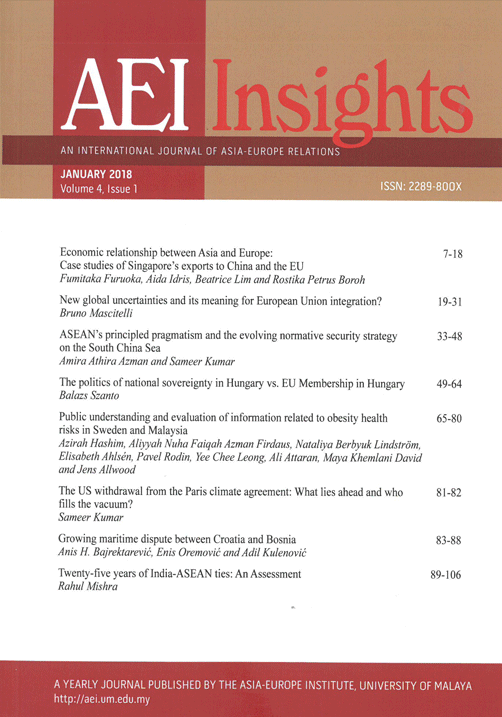Economic relationship between Asia and Europe: Case studies of Singapore’s exports to China and the EU
Keywords:
export, economic development, free trade agreement (FTA), SingaporeAbstract
Inter-regional trade negotiations between the EU and ASEAN have not met with much success
since they were first tabled in the Asia-Europe Meeting (ASEM) in 1996. This has led to separate discussions between the EU and individual ASEAN member countries to establish bilateral free trade agreements (FTAs). Singapore was the first ASEAN country to formalise a bilateral FTA with the EU, initialled in 2014 as the EU-Singapore Free Trade Agreement (EUSFTA). At the same time, Singapore has also developed a close trade relationship with China by establishing a China-Singapore Free Trade Agreement (CSFTA) in 2008. Despite the obvious significance of the EUSFTA and CSFTA, there has been little systematic research on the export-growth nexus in Singapore. Thus, this paper examines whether Singapore’s exports to China and the EU are beneficial for its economic development. Empirical findings indicate that there is unidirectional causality between exports to China and economic development, consistent with the export-led economic development hypothesis. Nevertheless the findings also show that, in line with the neutrality hypothesis, there is an independent relationship between exports to the EU and economic development. These findings have considerable implications on Singapore’s international trade policy and practices.




